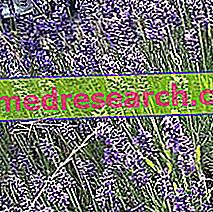Related articles: Encondroma
Definition
The enchondroma is a tumor that develops inside the bone, originating from the cartilage cells. In most cases, this neoplastic process is benign in nature, but there is the potential risk of chondrosarcoma malignant transformation.
The enchondroma can arise in any bone segment, but it develops mainly in the bones of the hands and feet, at the level of the diaphyses of the phalanges, metacarpals and metatarsals.
The disease tends to appear more commonly between the ages of 10 and 40, but may appear in people of all ages and genders.
The causes of the enchondroma are not yet known, but the tumor is often associated with other conditions, such as Ollier's disease (characterized by the presence of multiple endochondromes with asymmetric distribution) and Maffucci syndrome (a condition in which multiple chondromatosis is associated to soft tissue hemangiomas).
Most common symptoms and signs *
- Bone pain
- Articolar pains
- Bone fractures
- Joint swelling
- Nodule
- Joint stiffness
- Bone swelling
Further indications
Normally, the enchondroma is asymptomatic, but, over time, it can cause pain at the affected bone segment. In the region affected by the neoplastic process, a rapidly growing swelling or a bony or cartilaginous protuberance may also be present.
The enchondroma can also cause a limitation of the movement, which involves a difficulty in carrying out the usual activities. Furthermore, the presence of the tumor can make the affected bone more fragile, increasing the risk of pathological fractures even after minimal trauma.
The diagnosis is based on the clinical evaluation of the patient and on diagnostic imaging tests (x-rays, computerized tomography, magnetic resonance imaging and bone scintigraphy). At RX, the enchondroma can appear as a calcified lobular area within the bone. If the tumor is painful (and not the adjacent joint), a biopsy may be indicated for the differential diagnosis.
Treatment of a symptomatic encondroma may include surgical removal of the affected bone segment by curettage or total resection. An asymptomatic tumor can instead be monitored with control imaging tests to rule out the progression of chondrosarcoma disease. These tests should be performed approximately every 6 months or when symptoms appear.



